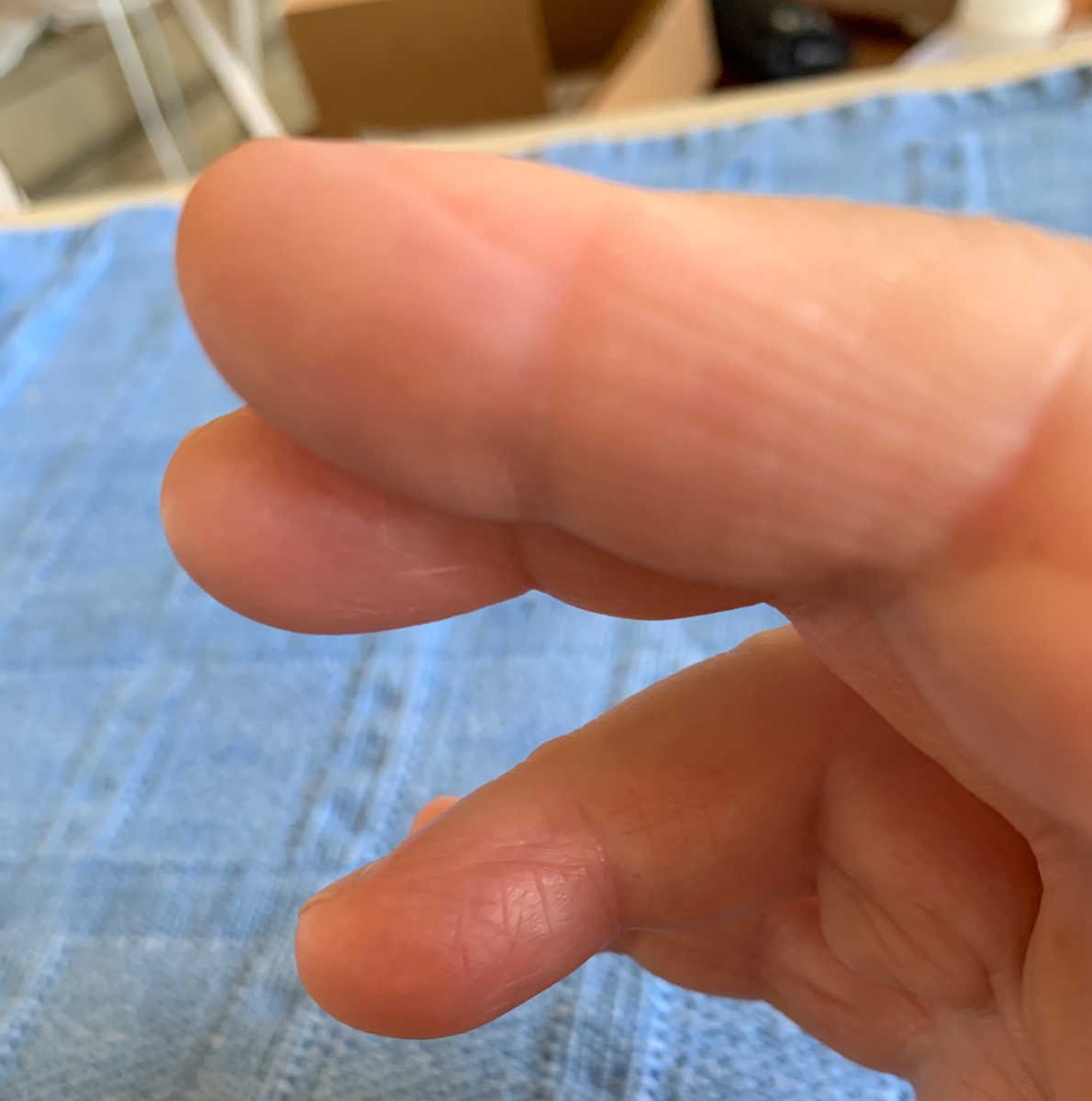If you’ve wondered why I seem to disappear once in a while, here is why.
Dupuytren’s Contracture, or Dupuytren’s Disease, is “… a benign condition which causes a tightening of the flesh beneath the skin of the palm and can result in permanently bent fingers.” I am afflicted with this, in a severe manner.
It usually starts with small nodules in the palms. Then, in some people, cords develop in the palm and fingers. In some of these people, the cords tighten, which is what causes the fingers to contract. In my experience, these cords are very strong. It seems like the bones in my fingers would break before the cords.
There is no cure, but the condition can be treated. Two non-invasive treatments are regularly used. One is needle aponeurotomy, where the doctor uses a needle to cut the cord until it can be broken. The other treatment is Xiaflex, an enzyme that is injected into a cord. It attacks the cord and weakens it, and after a few days the doctor can snap the cord. I’ve had one Xiaflex injection. In my case, the cord snapped like a carrot stick. (Xiaflex is the treatment advertised by former Denver Broncos quarterback John Elway.)
The most common invasive treatment is fasciectomy. This is major surgery, where the doctor cuts open the palm and fingers and dissects the diseased tissue. It’s a tedious operation, often performed under magnification, where the surgeon must exercise great care to avoid damage to nerves and blood vessels. I’ve had five such operations since 2016, some involving multiple fingers, and some revising previous surgery. Some were dermofasciectomy, meaning skin grafts were used.
After surgery, my hands were in a cast for a week to ten days. After the cast is removed, physical and occupational therapy starts. In my case, the therapy is very painful. My fingers have large surgical wounds and are swollen, but the therapist must exercise the fingers to ensure they can both straighten and contract to form a fist. I wear a splint at night and during the day as much as I can tolerate. For me, all this is very painful, if I haven’t mentioned that already.
This disease is not like cancer or heart disease. It will not kill me. But Dupuytren disease is associated with diabetes, hyperlipidemia, a variety of other medical conditions, increased cancer risk, and shortened lifespan. It often results in disability and loss of function, as it has in my life. Furthermore, the surgeries I’ve had, while successful, do not cure the disease. In fact, surgery leads to more surgery, in many cases. The Dupuytren’s Research Group explains: “The palm of the hand affected by Dupuytren’s behaves as though it is trying to shrink and heal an open skin wound that isn’t there. When surgery leaves skin wounds, because the hand has Dupuytren’s, the normal reaction to wounding can be greatly exaggerated: swelling, stiffness, tenderness, difficulty using the hand, and this reaction can drag on for much longer than it would without Dupuytren’s. The reaction to open surgery can result in permanent complications even if surgery is technically perfect.” This is one of the Catch-22s of treating Dupuytren’s contracture.
But without surgery, the contractions will usually progress until function of the hands is lost.

If you would like to learn more, I recommend the Dupuytren Research Group. A three-minute video explanation from this organization is here.
Articles, etc.
- From Dupuytren Research Group, a three-minute video explanation is available on YouTube here.
- This is a video lecture by Dr. Charles Eaton, executive director of the Dupuytren Research Group. It presents the latest knowledge as of 2019. It is 49 minutes in length, available on YouTube this link. The YouTube channel for Dupuytren Research Group is here.
- This one-minute video is a tour of the amazing and complex hand anatomy. It uses a cadaver hand and illustrated annotations to explain. Available on YouTube here.
- Here is an interesting article about Dupuytrens, published shortly after Ronald Reagan had surgery for the condition. This is from the New York Times, but I’m linking to an archived version that requires no subscription. Please note this article was written in 1989.
The Doctor’s World: Many, Like Reagan, Find Bent Finger a Bother (1989)
link






